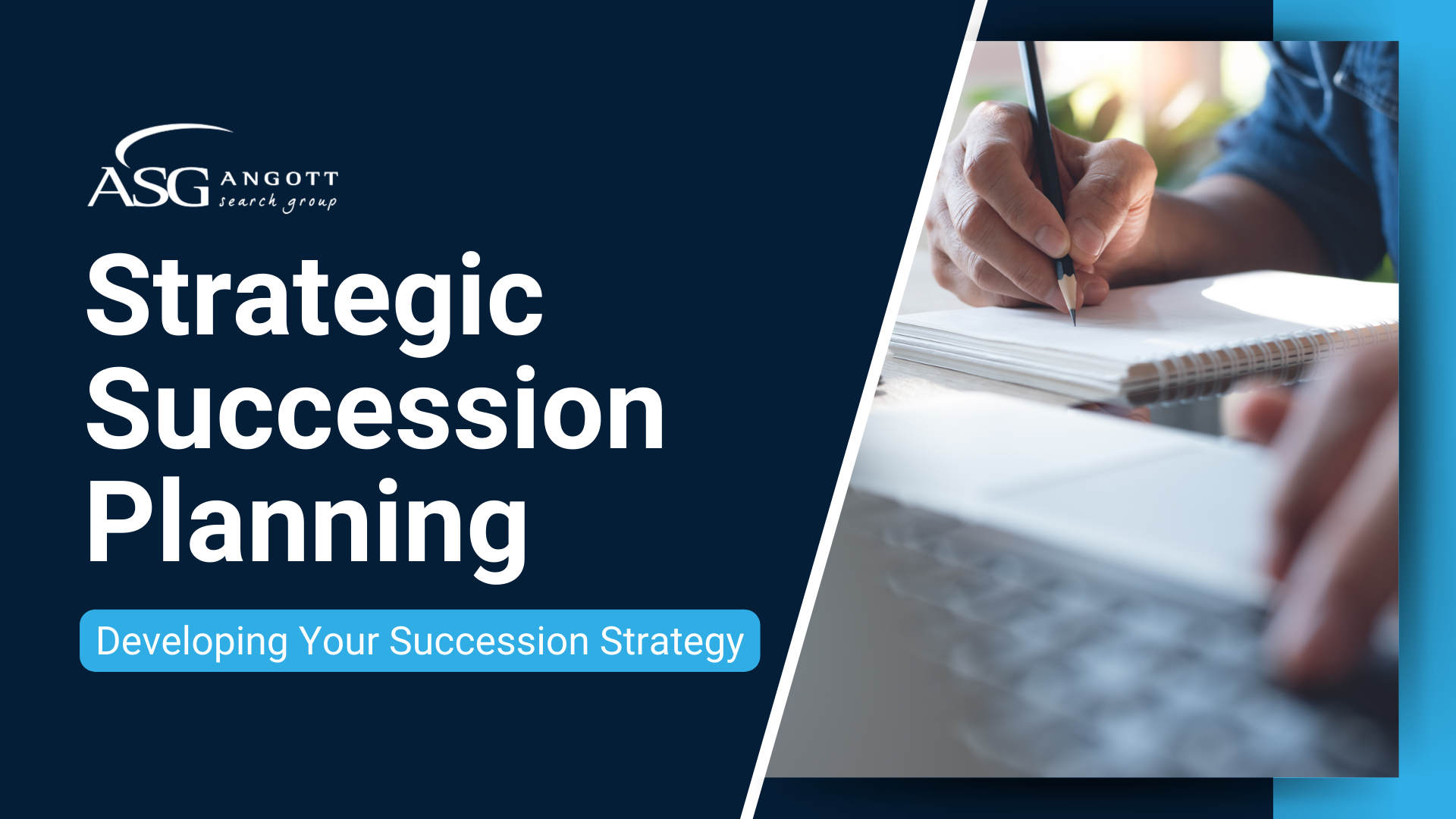Subscribe to Our LinkedIn Newsletter
Strategic Succession Planning
What is Succession Planning?
Succession planning is the process of identifying the critical positions within your organization and developing action plans for individuals to assume those positions.
- When a key employee reaches retirement age, it’s crucial to have a plan in place to transition their responsibilities and knowledge to their successor.
- If a high-ranking employee is promoted to a higher position, a succession plan ensures that their current role is filled with a qualified individual.
- As a company expands, it needs to ensure it has the talent to manage and lead new locations.
“Having placed leaders across industries, we know that intentional succession planning is crucial for long-term success. Organizations need both strong internal development and strategic external hiring to build their leadership pipeline.” – Mark Angott, Chairman & CEO
Beyond Crisis Management: The Strategic Value of Succession Planning
At ASG, we’ve noticed that organizations often view succession planning as merely a contingency measure. However, the most successful companies recognize it as a strategic advantage that drives ongoing business performance and sustainability.
Effective succession planning isn’t just about replacing departing leaders—it’s about cultivating a leadership pipeline that ensures organizational continuity, preserves institutional knowledge, and drives innovation through fresh perspectives.
Key Steps to Having a Successful Succession Plan
1. Set Your Short and Long-term Strategic Direction
Begin by clarifying where your organization is headed. Your succession plan should align with your business strategy and anticipate the leadership capabilities you’ll need not just for today but for tomorrow’s challenges.
2. Recognize Your Key Leadership Positions
Identify roles that are critical to your organization’s success. Look beyond just C-suite positions to include specialized technical roles, client relationship managers, and operational leaders whose departure would significantly impact your business.
3. Analyze Your Current Organizational Chart & Their Talent Level
Conduct a thorough assessment of your current leadership structure and evaluate the performance and potential of incumbents. This analysis should identify both strengths to leverage and gaps to address.
4. Pinpoint Your Available Talent
Map your internal talent pool to understand who could potentially step into key roles. Look for high-potential employees who demonstrate leadership capabilities, even if they’re not yet in formal leadership positions.
5. Develop Those Employees to Be Ready for Advancement
Implement targeted development programs that prepare your identified successors for future roles. This should include stretch assignments, cross-functional projects, mentoring relationships, and formal leadership training.
6. Identify Outside Resources if Internal Resources Are Not Available
Partner with executive search firms like ASG to identify external talent when internal candidates aren’t available. A strategic approach to external hiring brings fresh perspectives while maintaining organizational culture and values.
Benefits of an Elaborate Succession Plan
Smooth Transition
A well-crafted succession plan can help to ensure that the transition is smooth and seamless. This can help to avoid disruptions to the business and minimize the risk of conflict.
Protection of the Value of the Business
A succession plan can help to protect the value of your business by ensuring that it is passed on to a qualified and capable successor.
Increased Employee Morale
Succession planning can help to increase employee morale by demonstrating that the company is committed to its long-term success.
Retention of Top Talent
When employees see a clear path for advancement within your organization, they’re more likely to stay. Our clients report significantly higher retention rates among high-potential employees when succession planning is transparent and well-communicated.
Competitive Advantage Through Leadership Continuity
Organizations with robust succession plans maintain momentum during leadership transitions, while competitors often struggle with disruption. This continuity translates to sustained market performance and customer confidence.
Common Succession Planning Pitfalls to Avoid
Waiting Too Long
Many organizations delay succession planning until a leader announces their departure. Start early; effective succession planning should begin years before anticipated transitions.
Focusing Only on the C-Suite
While executive succession is critical, don’t neglect key roles throughout the organization. Middle management and specialized technical positions often have the most significant operational impact when vacated.
Neglecting External Benchmarking
Internal candidates should be evaluated against external market standards to ensure your leadership pipeline remains competitive. This is where partnership with an executive search firm provides valuable perspective.
How Angott Search Group Can Help
Our team specializes in comprehensive succession planning solutions that combine internal development with strategic external hiring. We offer:
- Succession readiness assessments
- Leadership competency modeling
- High-potential identification and development
- Executive search for strategic external hires
- Transition planning and onboarding support
Need help evaluating your succession planning strategy or identifying key leadership talent? Contact us to discuss how we can support your leadership development goals.
CEO Succession Planning – ASG Case Study
When the CEO of a leading credit union began planning for her retirement 18 months in advance, she reached out to us for guidance on developing a strategic succession plan. She wanted to ensure a smooth transition while giving both the Board and potential successors clarity and confidence in the process.
We designed a comprehensive development plan for all identified candidates—including internal leaders—to help them close skill and experience gaps over the next year. At the end of this period, we will conduct a thorough assessment and present our findings to the Board, evaluating each candidate’s alignment with the Board’s vision, qualifications, and leadership expectations.
Even if an internal candidate is not ultimately selected, this structured approach ensures they feel genuinely considered and supported. By investing in their growth, the organization strengthens leadership engagement and retention, reinforcing a culture of development and long-term commitment.




